SEO
Tips For Avoiding Misinformation In SEO Resources & Conversations

There are many contradictory ideas about the best way to approach SEO.
For every idea proposed, there are others in the SEO industry who disagree.
Turning to Google for help isn’t always helpful because Google ranks information about SEO that Googlers themselves are on record saying is wrong.
There is a way to cut through the noise and figure out which information is likely valid and which information is smoke and mirrors.
Googlers Statements On SEO Information
What Googlers say about SEO is generally limited to four topics:
- Actions to avoid a negative outcome.
- How to increase indexing.
- How to help Google better understand your webpages.
- Confirmation that site promotion is important.
Googlers don’t offer loopholes for how to influence rankings, of course. But the information they do provide is useful and consistent.
For example, a Googler can’t necessarily say that Google has an algorithm that’s specifically for hunting down and killing guest posts for SEO links.
But they can advise that guest posting for SEO is done and that publishers should stick a fork in it.
By doing that, the Googler is helping publishers avoid a possible penalty or spending money on a service that won’t produce the desired results.
It makes sense to seek out what Googlers say. What Googlers say is literally the most authoritative statement about how Google works.
Why Google Has A Webmaster Outreach
The whole reason why there is a Webmaster outreach is that former Googler Matt Cutts sees value in communicating with the search community to help them avoid mistakes and misinformation.
So, he began communicating with publishers at various SEO forums under the nickname, GoogleGuy.
Here’s a post from 2004 where GoogleGuy introduced himself and explained the origin of Google’s outreach and his motivation:
“About three years ago, I was waiting for a program to finish compiling, and I was reading what people online were saying about Google.
I remember seeing a question from a site owner about how to structure his site for better crawling, and thinking it would be great if a Googler could just pop by to answer technical questions like that.
And then I thought, I’m a Google engineer. I can answer technical questions like that. So, I did.
Since then, I’ve managed to post around 2,000 messages in various web forums, setting the record straight whenever possible.”
Are Googlers Inconsistent?
It’s common to hear people complain that Google is contradictory. If that’s true, how can you trust what Googlers say is not SEO misinformation?
But, the reason for the contradictions is usually not the Googler’s fault. It’s consistently the fault of the person who is writing about what the Googler said.
In my experience of several years of listening to the Google office-hours hangouts, Googlers are very consistent about what they say, even when you backtrack 10 or more years to previous statements, what they advise is consistent and not contradictory.
Paying attention to what Googlers say has always been a good practice. And if what a publication reports seem to contradict a previous statement, listen to the statement itself.
For example, there are some sites that post about ranking factors based on what an ex-Googler says in a video.
But when you listen to the video, the ex-Googler never said what people say that he said.
Even so, the erroneous statement about a false ranking factor keeps proliferating on the internet because no one stops to listen to the video.
Don’t take what someone writes for granted.
Always check the video, blog post, or podcast for yourself.
Google Search Engine Is A Source Of SEO Misinformation?
While Googlers are a trusted source of SEO information, Google itself can be an unreliable source of SEO information.
Here’s an example of Google’s John Mueller debunking LSI Keywords in a tweet:
-
Screenshot from Twitter, May 2022

Searching Google for SEO information yields inconsistent search results.
For example:
- Searching for LSI keywords (which Mueller above says doesn’t exist) shows several websites that say that LSI keywords do exist.
- Searching PBN links (links on blogs) yields a top-ranked page that sells PBN links.
- Searches for “Link Wheels” (building blogs and linking to your own content) yields results that recommend the practice.
In general, the top search results about SEO topics tend to be fairly reliable nowadays.
Google tends to show search results that promote risky strategies if you search for risky strategies (like link wheels or PBN links).
Sometimes it might be more helpful to find an SEO forum or Facebook Group and ask a real person (instead of an algorithm) for information about SEO.
Should You Ignore What Googlers Say?
Googlers are on their side of the search engine and publishers/SEOs are on the other side. We both experience search differently.
So, it makes sense that there are differences in opinions about some topics, particularly about what is fair and what is relevant.
However, there are some areas of the internet where it is commonly held that it’s best to not listen to what Googlers say.
Some consistently advise others to literally do the opposite of what Googlers say.
Others appear to have a grudge and offer consistently negative opinions on the topic of Google.
Then, there are news stories about Google AI researchers who were fired after raising ethical concerns.
Should Google Be Believed?
It’s helpful to focus on the Googlers who liaison with the search marketing community.
Googlers like Gary Illyes and John Mueller have a long history of sharing high-quality information with the search marketing community.
The record of all the information they shared is on YouTube, Twitter, and on Google blog posts.
When John Mueller is uncertain about an answer to a question, he says so. When he is certain, his answer is unambiguous.
Danny Sullivan used to be a search marketing reporter before joining Google.
He is on our side, and he, too, has a solid track record of answering questions, passing along concerns, and responding to concerns in the search community, like publishing an article about Core Algorithm Updates in response to questions about what they are and how publishers should deal with them.
In general, be wary of anyone who consistently advises people to ignore what Google says.
Discern Between Opinion And Fact-Based Insight
It’s important to verify if the writer is citing and linking to an authoritative source or is simply offering an opinion.
When someone writes about Google and then links to supporting evidence like a Googler statement, a patent, or research paper, their statement becomes better than an opinion because now it’s a fact-based insight with supporting evidence.
What they write might still not be true about Google, but at least there is supporting evidence that it could be true.
Unless a Googler says something is true, we can’t really know.
So, the best anyone can do is to point to a Googler statement, a research paper, or a patent as supporting evidence that something might be true.
For centuries, common sense dictated that the earth was at the center of the universe. Common sense is not a substitute for evidence and data.
Opinions without supporting evidence, regardless of how much “sense” it makes, are unreliable.
Googler Statements Must Be In Context
Some people have agendas. When that happens, they tend to cite Googler statements out of context in order to push their agendas.
The typical agenda consists of sowing fear and uncertainty for the purpose of creating more business.
It’s not uncommon for search marketers to say that Googlers contradict themselves.
I find that Googlers are remarkably consistent, especially John Mueller.
What is inconsistent is how some people interpret what he says.
Google’s John Mueller lamented in a podcast that “two-thirds of what he is quoted as saying is misquoted or quoted out of context.”
Correlation Studies Are Not Reliable
Articles featuring correlation data tend to attract a lot of attention, which makes them useful for clickbait.
Data obtained from studying any number of search results, even millions of search results, will always show patterns.
But the patterns are meaningless because… correlation does not imply causation.
Correlation studies often look at one or a handful of factors in isolation, ignoring all the other more than 200 ranking factors that influence search rankings.
Correlation studies also tend to ignore non-ranking factors that influence the search results such as:
- Prior searches.
- Geolocation.
- Query reformulation.
- User intent.
- Multiple intents in the search results.
The above are just factors that can muddy up any attempt to correlate what ranks in the search results with any one particular quality of a webpage.
If you want to avoid SEO misinformation, consider avoiding most, if not all, correlation-based SEO research.
Can You Trust What’s In A Patent?
The problem with articles written about patents is that some people don’t know how to interpret them – and that can result in SEO misinformation.
The way a patent can result in misinformation is that the person making claims about it uses just one section of a patent, in isolation, pulled out of the context of the rest of the patent.
If you read an article about a patent and the author does not discuss the context of the entire patent and is only using one passage from the patent, it’s highly likely that the conclusions drawn from the patent are misinformed.
A patent or research paper should always be discussed within the context of the entire patent.
It’s a common mistake to pull one section of the patent and derive conclusions from that section taken out of context.
SEO Misinformation
It can be tough discerning between good SEO information, outright lies, and pure misinformation.
Some misinformation happens because the information was not double-checked, and it ends up spreading across the internet.
Some misinformation happens because some people put too much trust in common sense (which is unreliable).
Ultimately, we can’t know for certain what’s in Google’s algorithm.
The best we can do is understand that SEO information has tiers of validity, beginning at the top with publications from Google that offer confirmation about what’s in Google’s algorithm, then statements from Googlers. This is information that can be trusted.
After that, we get into a sort of gray zone with patents and research papers that are unconfirmed by Google whether or not they’re being used.
The least trustworthy tier of information is the one based on correlation studies and pure opinions.
When I am in doubt, what I do is seek a reality check from people I trust.
More Resources:
Featured Image: Shift Drive/Shutterstock
!function(f,b,e,v,n,t,s)
{if(f.fbq)return;n=f.fbq=function(){n.callMethod?
n.callMethod.apply(n,arguments):n.queue.push(arguments)};
if(!f._fbq)f._fbq=n;n.push=n;n.loaded=!0;n.version=’2.0′;
n.queue=[];t=b.createElement(e);t.async=!0;
t.src=v;s=b.getElementsByTagName(e)[0];
s.parentNode.insertBefore(t,s)}(window,document,’script’,
‘https://connect.facebook.net/en_US/fbevents.js’);
if( typeof sopp !== “undefined” && sopp === ‘yes’ ){
fbq(‘dataProcessingOptions’, [‘LDU’], 1, 1000);
}else{
fbq(‘dataProcessingOptions’, []);
}
fbq(‘init’, ‘1321385257908563’);
fbq(‘track’, ‘PageView’);
fbq(‘trackSingle’, ‘1321385257908563’, ‘ViewContent’, {
content_name: ‘avoid-seo-misinformation’,
content_category: ‘seo’
});
SEO
How To Write ChatGPT Prompts To Get The Best Results

ChatGPT is a game changer in the field of SEO. This powerful language model can generate human-like content, making it an invaluable tool for SEO professionals.
However, the prompts you provide largely determine the quality of the output.
To unlock the full potential of ChatGPT and create content that resonates with your audience and search engines, writing effective prompts is crucial.
In this comprehensive guide, we’ll explore the art of writing prompts for ChatGPT, covering everything from basic techniques to advanced strategies for layering prompts and generating high-quality, SEO-friendly content.
Writing Prompts For ChatGPT
What Is A ChatGPT Prompt?
A ChatGPT prompt is an instruction or discussion topic a user provides for the ChatGPT AI model to respond to.
The prompt can be a question, statement, or any other stimulus to spark creativity, reflection, or engagement.
Users can use the prompt to generate ideas, share their thoughts, or start a conversation.
ChatGPT prompts are designed to be open-ended and can be customized based on the user’s preferences and interests.
How To Write Prompts For ChatGPT
Start by giving ChatGPT a writing prompt, such as, “Write a short story about a person who discovers they have a superpower.”
ChatGPT will then generate a response based on your prompt. Depending on the prompt’s complexity and the level of detail you requested, the answer may be a few sentences or several paragraphs long.
Use the ChatGPT-generated response as a starting point for your writing. You can take the ideas and concepts presented in the answer and expand upon them, adding your own unique spin to the story.
If you want to generate additional ideas, try asking ChatGPT follow-up questions related to your original prompt.
For example, you could ask, “What challenges might the person face in exploring their newfound superpower?” Or, “How might the person’s relationships with others be affected by their superpower?”
Remember that ChatGPT’s answers are generated by artificial intelligence and may not always be perfect or exactly what you want.
However, they can still be a great source of inspiration and help you start writing.
Must-Have GPTs Assistant
I recommend installing the WebBrowser Assistant created by the OpenAI Team. This tool allows you to add relevant Bing results to your ChatGPT prompts.
This assistant adds the first web results to your ChatGPT prompts for more accurate and up-to-date conversations.
It is very easy to install in only two clicks. (Click on Start Chat.)
For example, if I ask, “Who is Vincent Terrasi?,” ChatGPT has no answer.
With WebBrower Assistant, the assistant creates a new prompt with the first Bing results, and now ChatGPT knows who Vincent Terrasi is.
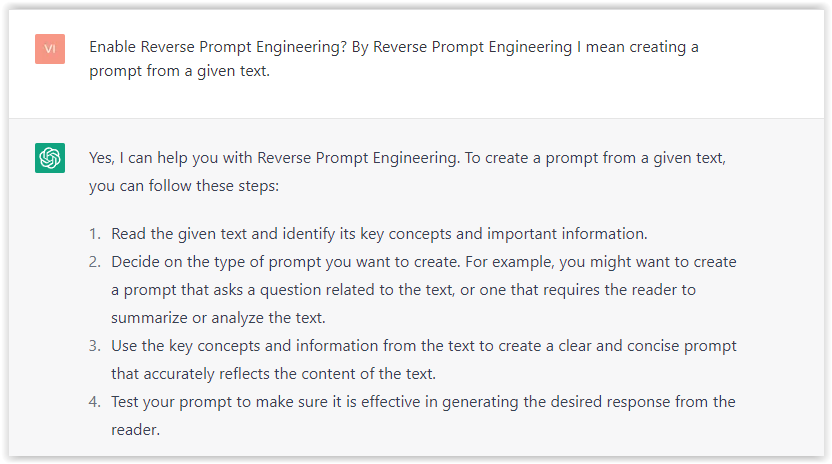 Screenshot from ChatGPT, March 2023
Screenshot from ChatGPT, March 2023You can test other GPT assistants available in the GPTs search engine if you want to use Google results.
Master Reverse Prompt Engineering
ChatGPT can be an excellent tool for reverse engineering prompts because it generates natural and engaging responses to any given input.
By analyzing the prompts generated by ChatGPT, it is possible to gain insight into the model’s underlying thought processes and decision-making strategies.
One key benefit of using ChatGPT to reverse engineer prompts is that the model is highly transparent in its decision-making.
This means that the reasoning and logic behind each response can be traced, making it easier to understand how the model arrives at its conclusions.
Once you’ve done this a few times for different types of content, you’ll gain insight into crafting more effective prompts.
Prepare Your ChatGPT For Generating Prompts
First, activate the reverse prompt engineering.
- Type the following prompt: “Enable Reverse Prompt Engineering? By Reverse Prompt Engineering I mean creating a prompt from a given text.”
 Screenshot from ChatGPT, March 2023
Screenshot from ChatGPT, March 2023ChatGPT is now ready to generate your prompt. You can test the product description in a new chatbot session and evaluate the generated prompt.
- Type: “Create a very technical reverse prompt engineering template for a product description about iPhone 11.”
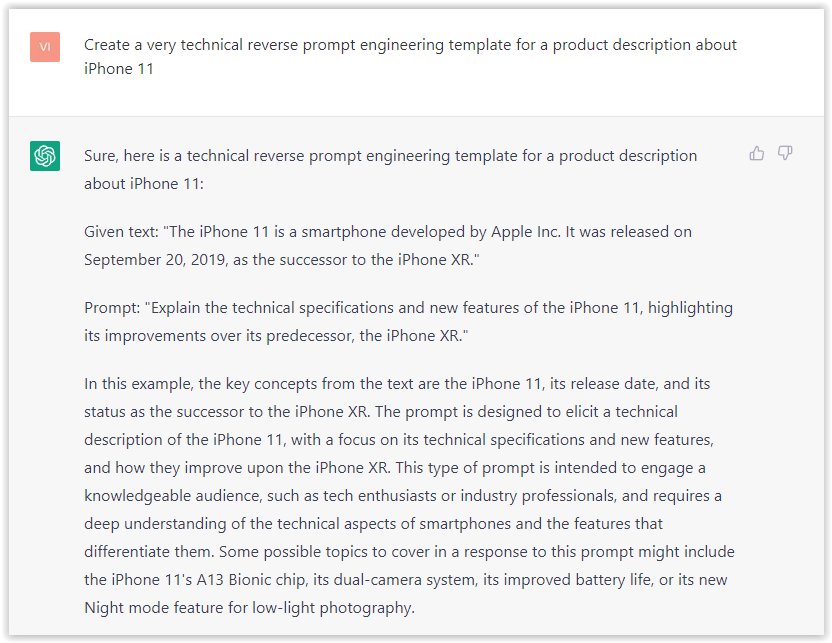 Screenshot from ChatGPT, March 2023
Screenshot from ChatGPT, March 2023The result is amazing. You can test with a full text that you want to reproduce. Here is an example of a prompt for selling a Kindle on Amazon.
- Type: “Reverse Prompt engineer the following {product), capture the writing style and the length of the text :
product =”
 Screenshot from ChatGPT, March 2023
Screenshot from ChatGPT, March 2023I tested it on an SEJ blog post. Enjoy the analysis – it is excellent.
- Type: “Reverse Prompt engineer the following {text}, capture the tone and writing style of the {text} to include in the prompt :
text = all text coming from https://www.searchenginejournal.com/google-bard-training-data/478941/”
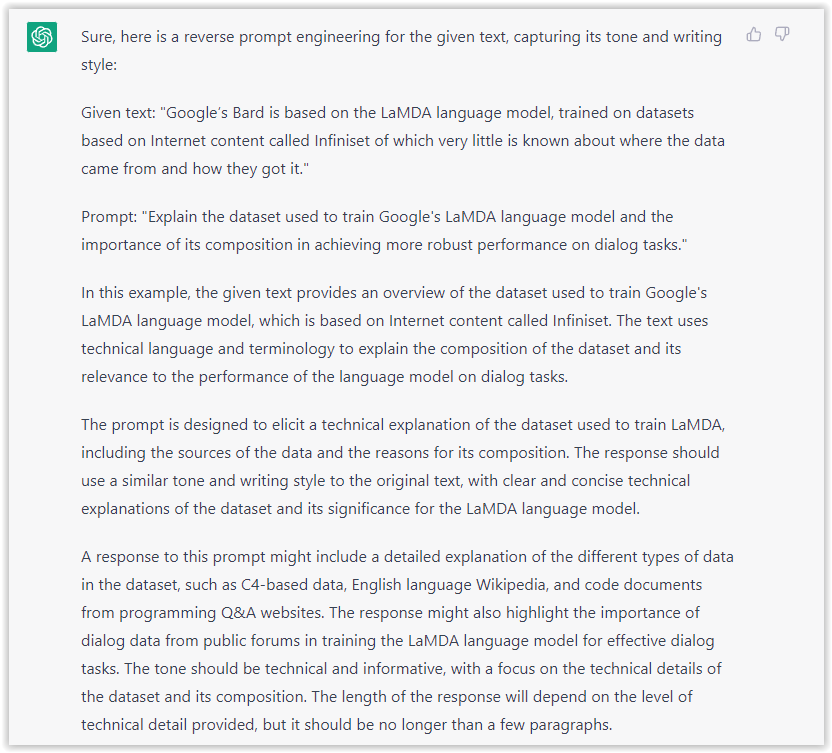 Screenshot from ChatGPT, March 2023
Screenshot from ChatGPT, March 2023But be careful not to use ChatGPT to generate your texts. It is just a personal assistant.
Go Deeper
Prompts and examples for SEO:
- Keyword research and content ideas prompt: “Provide a list of 20 long-tail keyword ideas related to ‘local SEO strategies’ along with brief content topic descriptions for each keyword.”
- Optimizing content for featured snippets prompt: “Write a 40-50 word paragraph optimized for the query ‘what is the featured snippet in Google search’ that could potentially earn the featured snippet.”
- Creating meta descriptions prompt: “Draft a compelling meta description for the following blog post title: ’10 Technical SEO Factors You Can’t Ignore in 2024′.”
Important Considerations:
- Always Fact-Check: While ChatGPT can be a helpful tool, it’s crucial to remember that it may generate inaccurate or fabricated information. Always verify any facts, statistics, or quotes generated by ChatGPT before incorporating them into your content.
- Maintain Control and Creativity: Use ChatGPT as a tool to assist your writing, not replace it. Don’t rely on it to do your thinking or create content from scratch. Your unique perspective and creativity are essential for producing high-quality, engaging content.
- Iteration is Key: Refine and revise the outputs generated by ChatGPT to ensure they align with your voice, style, and intended message.
Additional Prompts for Rewording and SEO:
– Rewrite this sentence to be more concise and impactful.
– Suggest alternative phrasing for this section to improve clarity.
– Identify opportunities to incorporate relevant internal and external links.
– Analyze the keyword density and suggest improvements for better SEO.
Remember, while ChatGPT can be a valuable tool, it’s essential to use it responsibly and maintain control over your content creation process.
Experiment And Refine Your Prompting Techniques
Writing effective prompts for ChatGPT is an essential skill for any SEO professional who wants to harness the power of AI-generated content.
Hopefully, the insights and examples shared in this article can inspire you and help guide you to crafting stronger prompts that yield high-quality content.
Remember to experiment with layering prompts, iterating on the output, and continually refining your prompting techniques.
This will help you stay ahead of the curve in the ever-changing world of SEO.
More resources:
Featured Image: Tapati Rinchumrus/Shutterstock
SEO
Measuring Content Impact Across The Customer Journey
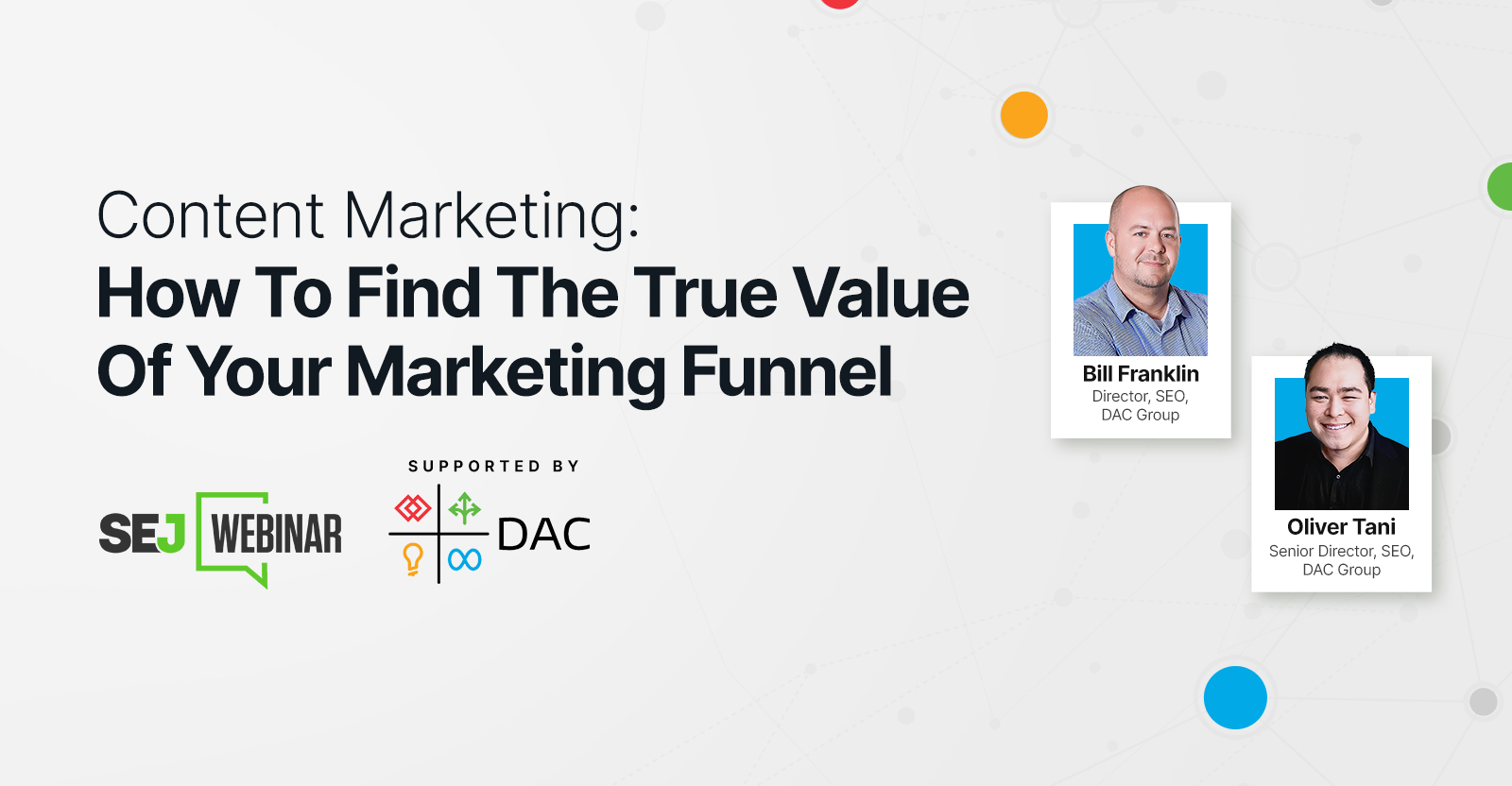
Understanding the impact of your content at every touchpoint of the customer journey is essential – but that’s easier said than done. From attracting potential leads to nurturing them into loyal customers, there are many touchpoints to look into.
So how do you identify and take advantage of these opportunities for growth?
Watch this on-demand webinar and learn a comprehensive approach for measuring the value of your content initiatives, so you can optimize resource allocation for maximum impact.
You’ll learn:
- Fresh methods for measuring your content’s impact.
- Fascinating insights using first-touch attribution, and how it differs from the usual last-touch perspective.
- Ways to persuade decision-makers to invest in more content by showcasing its value convincingly.
With Bill Franklin and Oliver Tani of DAC Group, we unravel the nuances of attribution modeling, emphasizing the significance of layering first-touch and last-touch attribution within your measurement strategy.
Check out these insights to help you craft compelling content tailored to each stage, using an approach rooted in first-hand experience to ensure your content resonates.
Whether you’re a seasoned marketer or new to content measurement, this webinar promises valuable insights and actionable tactics to elevate your SEO game and optimize your content initiatives for success.
View the slides below or check out the full webinar for all the details.
SEO
How to Find and Use Competitor Keywords
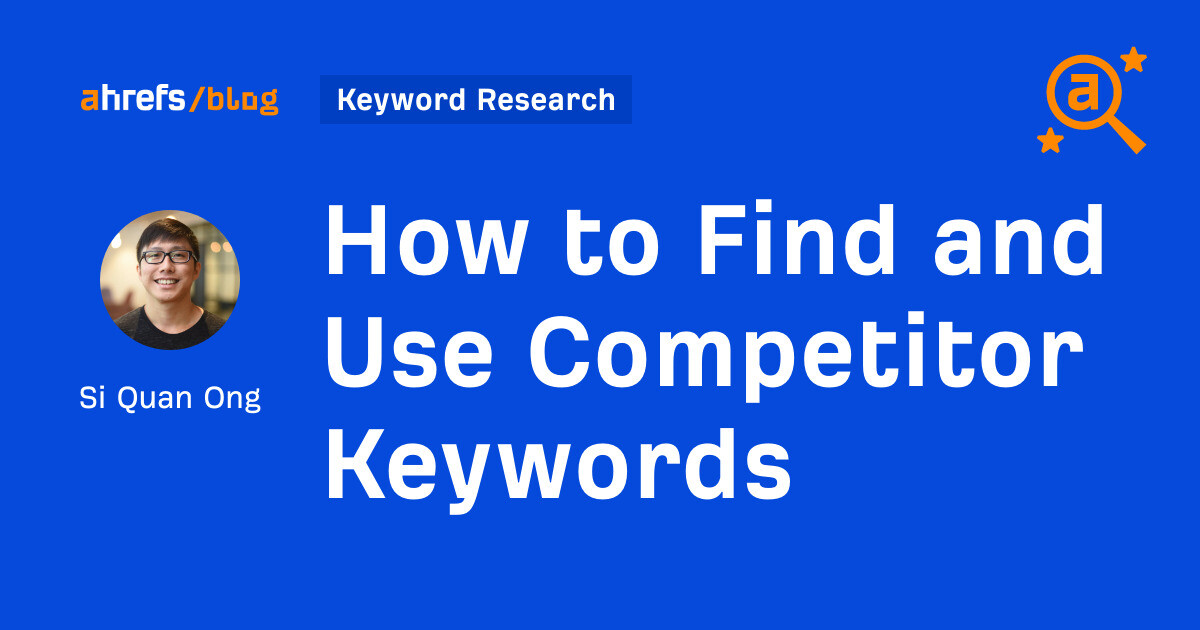
Competitor keywords are the keywords your rivals rank for in Google’s search results. They may rank organically or pay for Google Ads to rank in the paid results.
Knowing your competitors’ keywords is the easiest form of keyword research. If your competitors rank for or target particular keywords, it might be worth it for you to target them, too.
There is no way to see your competitors’ keywords without a tool like Ahrefs, which has a database of keywords and the sites that rank for them. As far as we know, Ahrefs has the biggest database of these keywords.
How to find all the keywords your competitor ranks for
- Go to Ahrefs’ Site Explorer
- Enter your competitor’s domain
- Go to the Organic keywords report
The report is sorted by traffic to show you the keywords sending your competitor the most visits. For example, Mailchimp gets most of its organic traffic from the keyword “mailchimp.”


Since you’re unlikely to rank for your competitor’s brand, you might want to exclude branded keywords from the report. You can do this by adding a Keyword > Doesn’t contain filter. In this example, we’ll filter out keywords containing “mailchimp” or any potential misspellings:
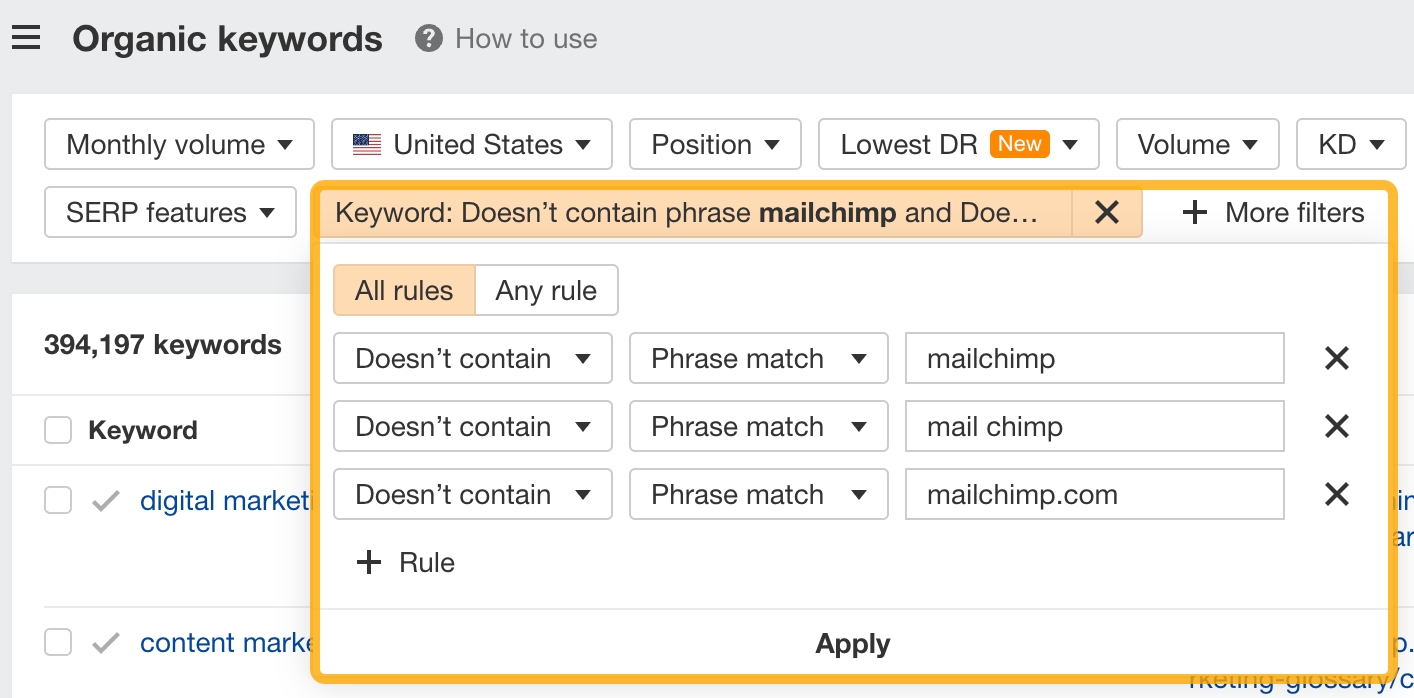

If you’re a new brand competing with one that’s established, you might also want to look for popular low-difficulty keywords. You can do this by setting the Volume filter to a minimum of 500 and the KD filter to a maximum of 10.
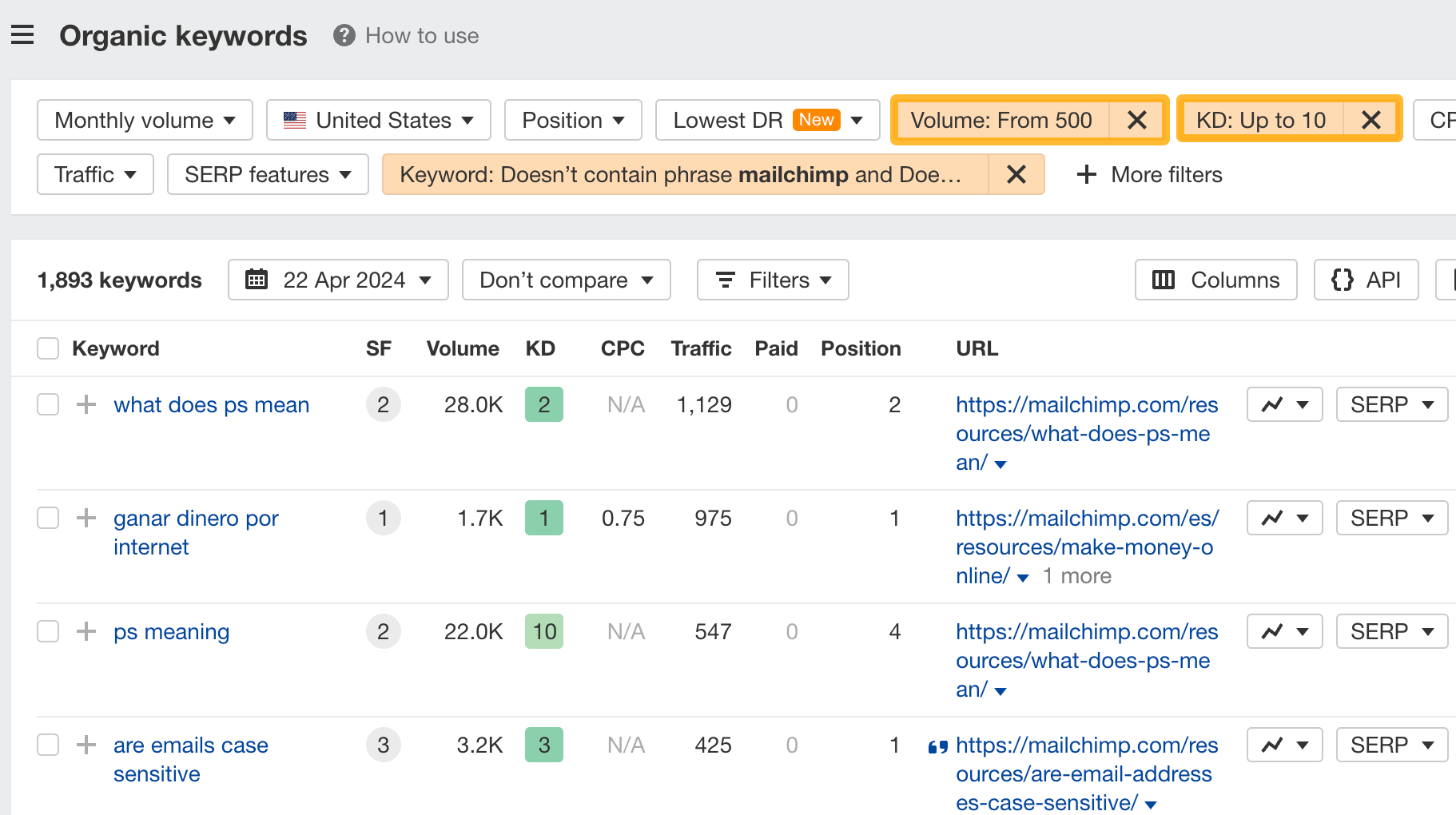

How to find keywords your competitor ranks for, but you don’t
- Go to Competitive Analysis
- Enter your domain in the This target doesn’t rank for section
- Enter your competitor’s domain in the But these competitors do section
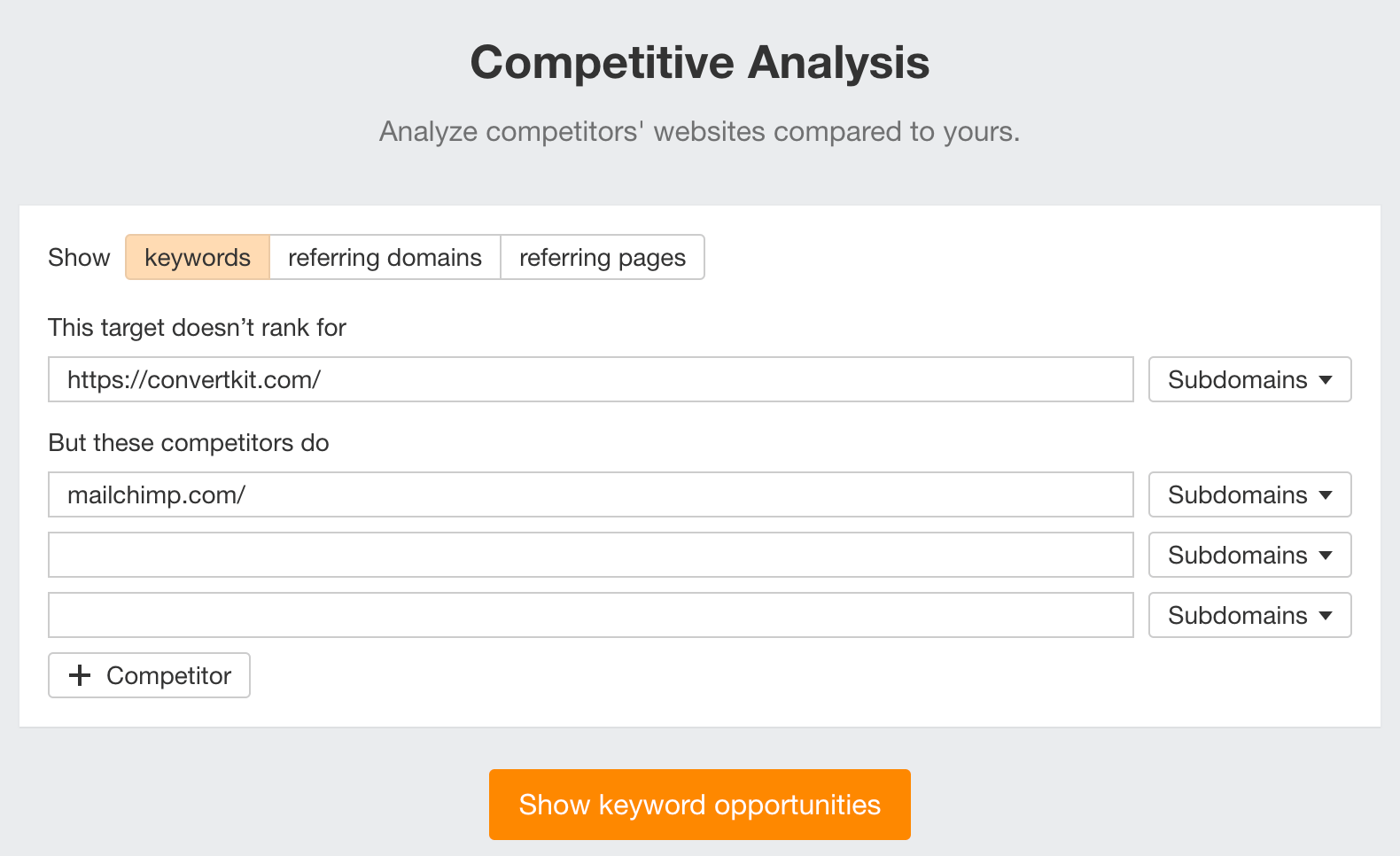

Hit “Show keyword opportunities,” and you’ll see all the keywords your competitor ranks for, but you don’t.
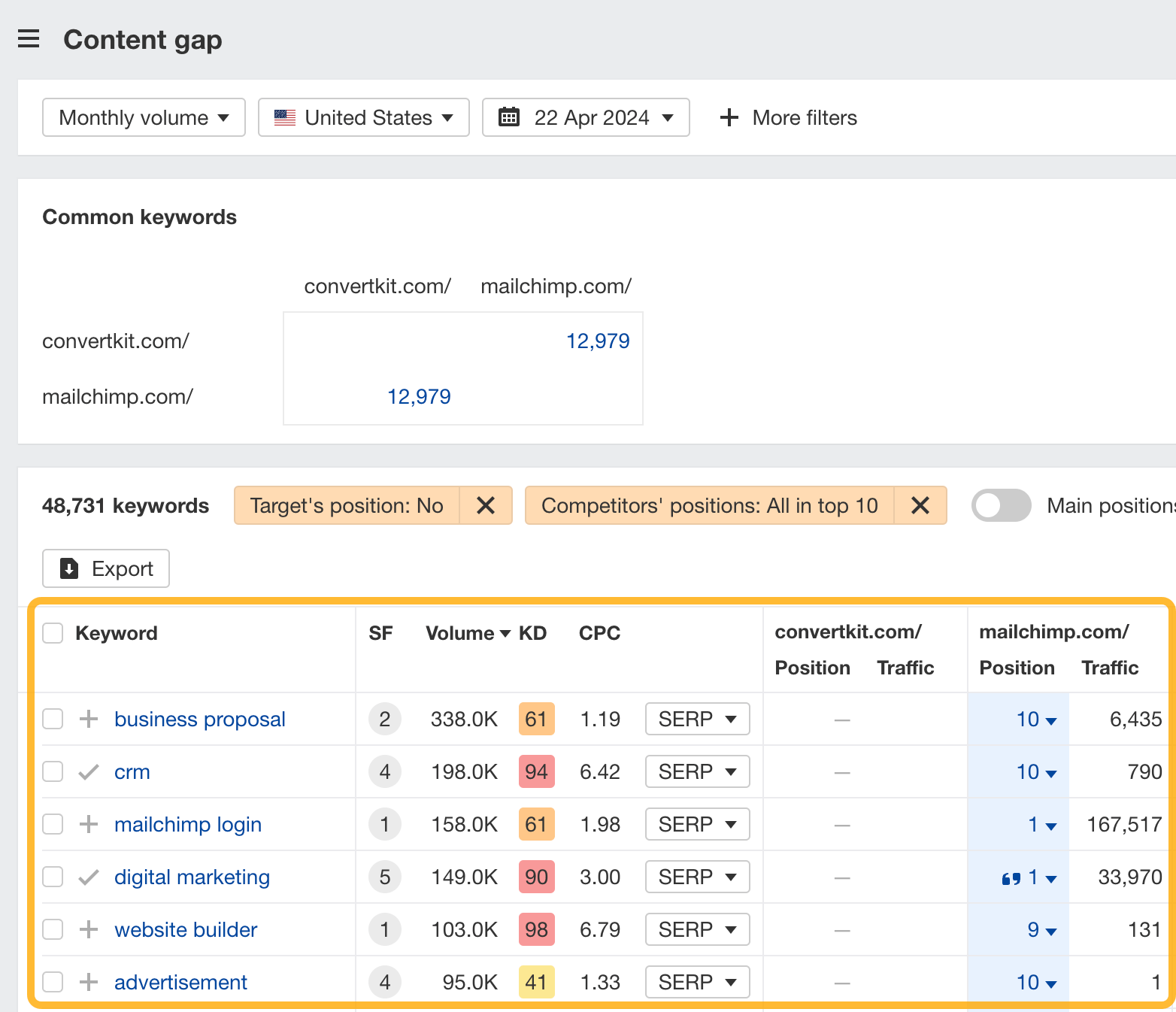

You can also add a Volume and KD filter to find popular, low-difficulty keywords in this report.
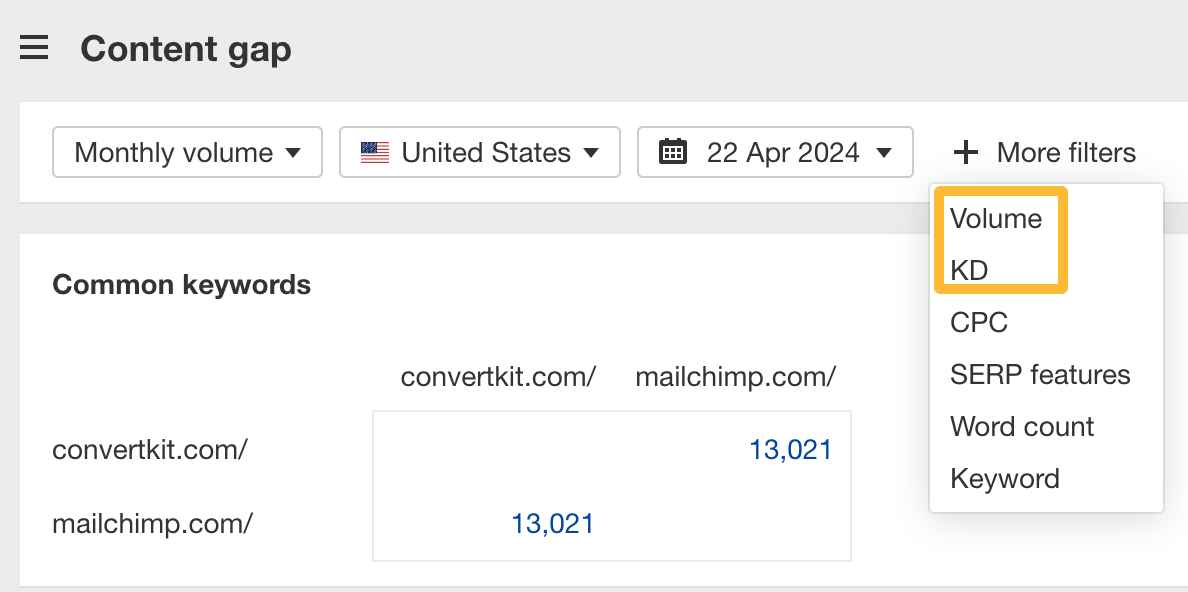

How to find keywords multiple competitors rank for, but you don’t
- Go to Competitive Analysis
- Enter your domain in the This target doesn’t rank for section
- Enter the domains of multiple competitors in the But these competitors do section
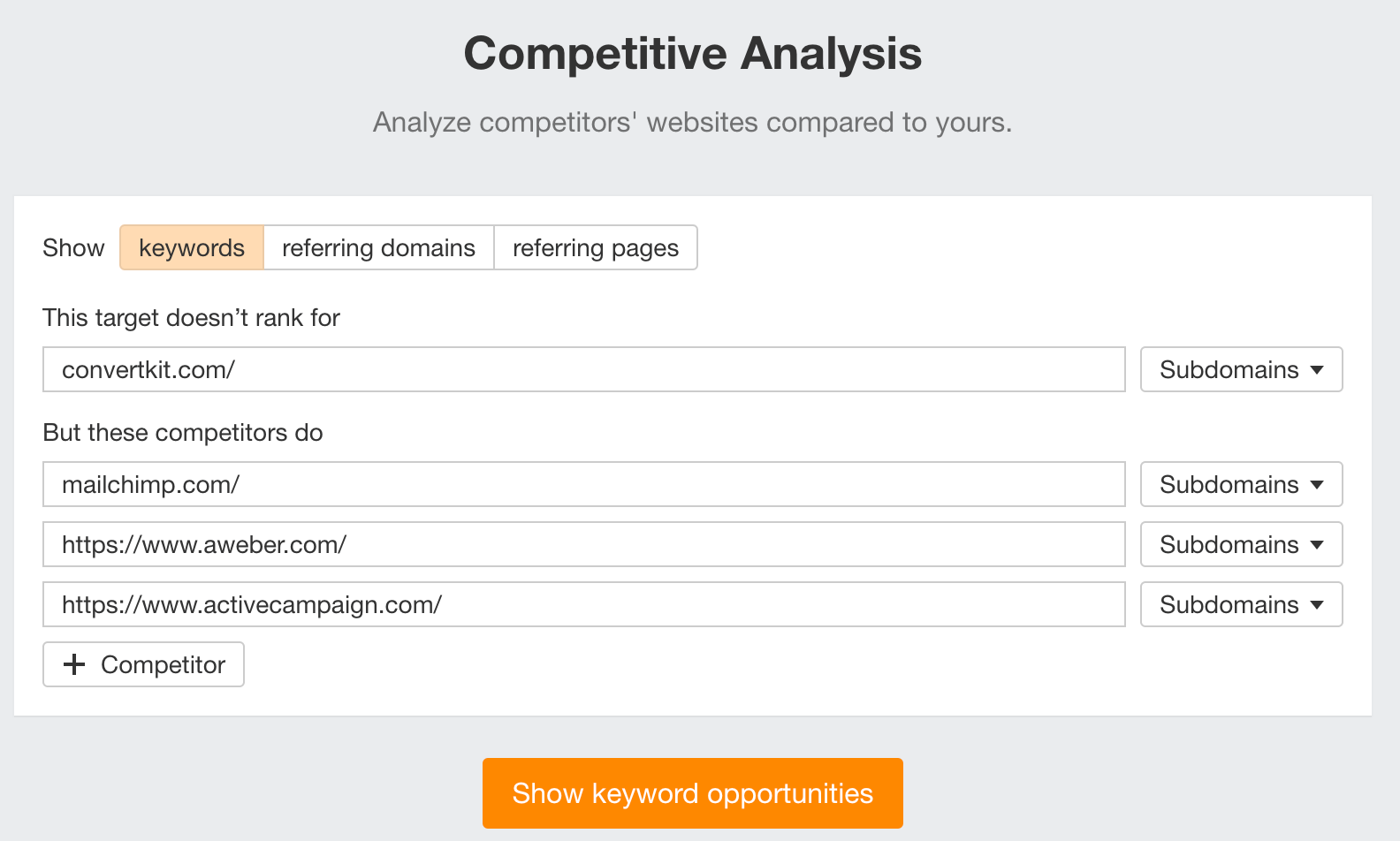

You’ll see all the keywords that at least one of these competitors ranks for, but you don’t.
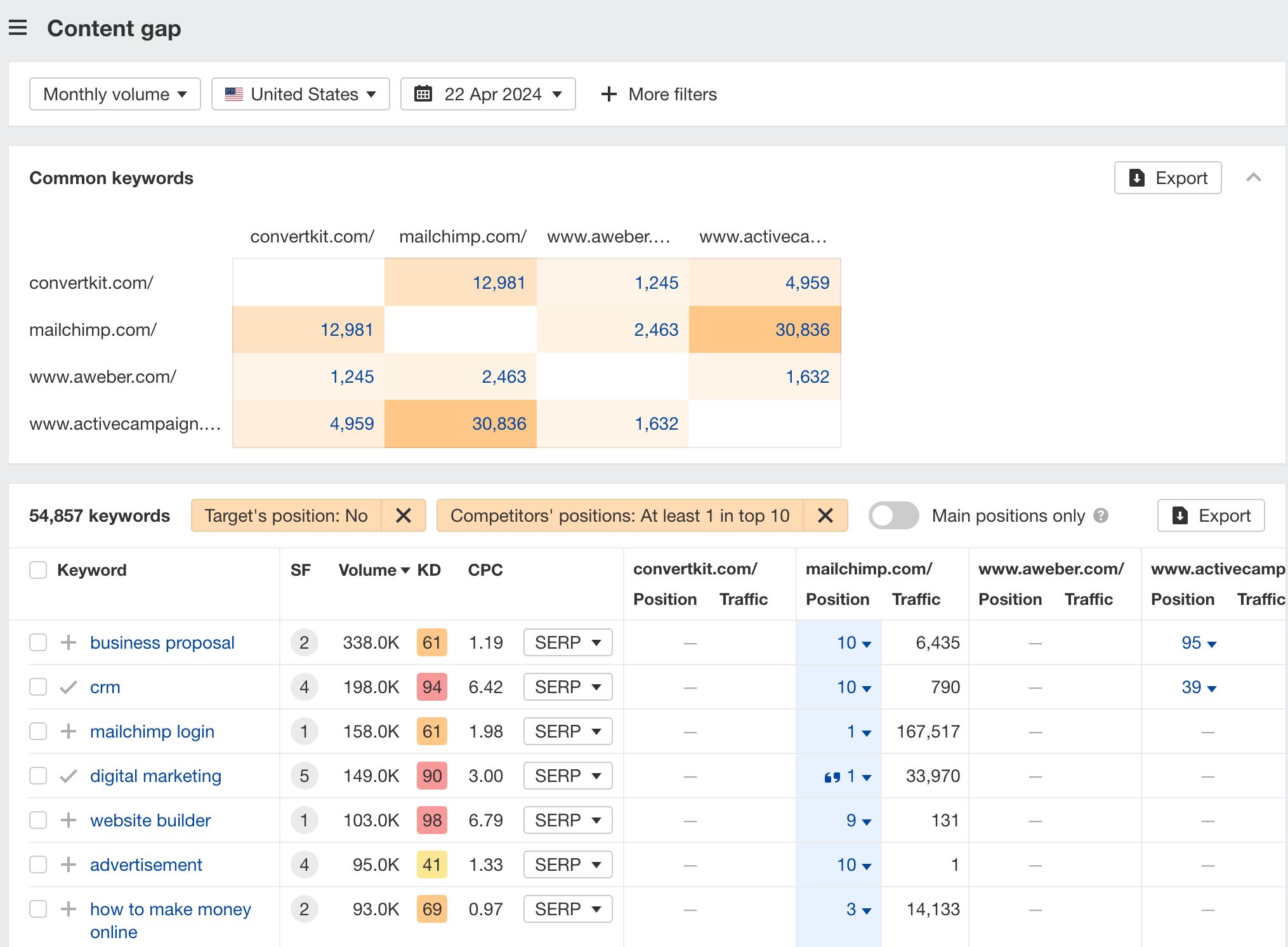

You can also narrow the list down to keywords that all competitors rank for. Click on the Competitors’ positions filter and choose All 3 competitors:
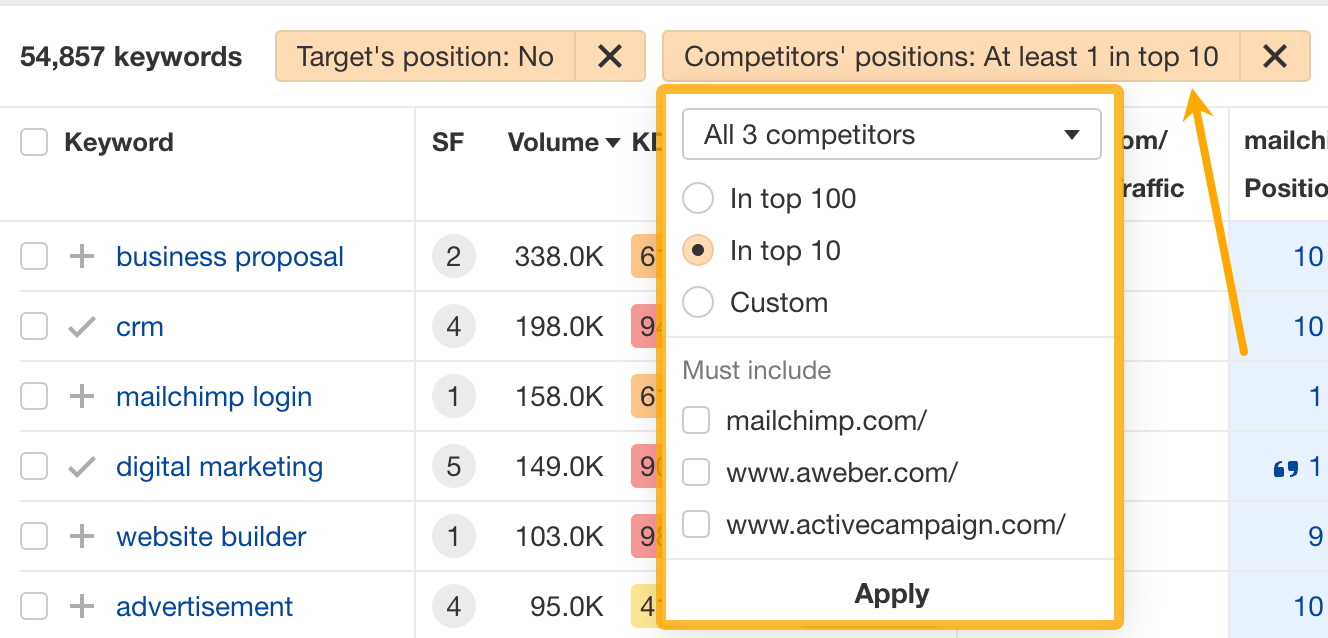

- Go to Ahrefs’ Site Explorer
- Enter your competitor’s domain
- Go to the Paid keywords report
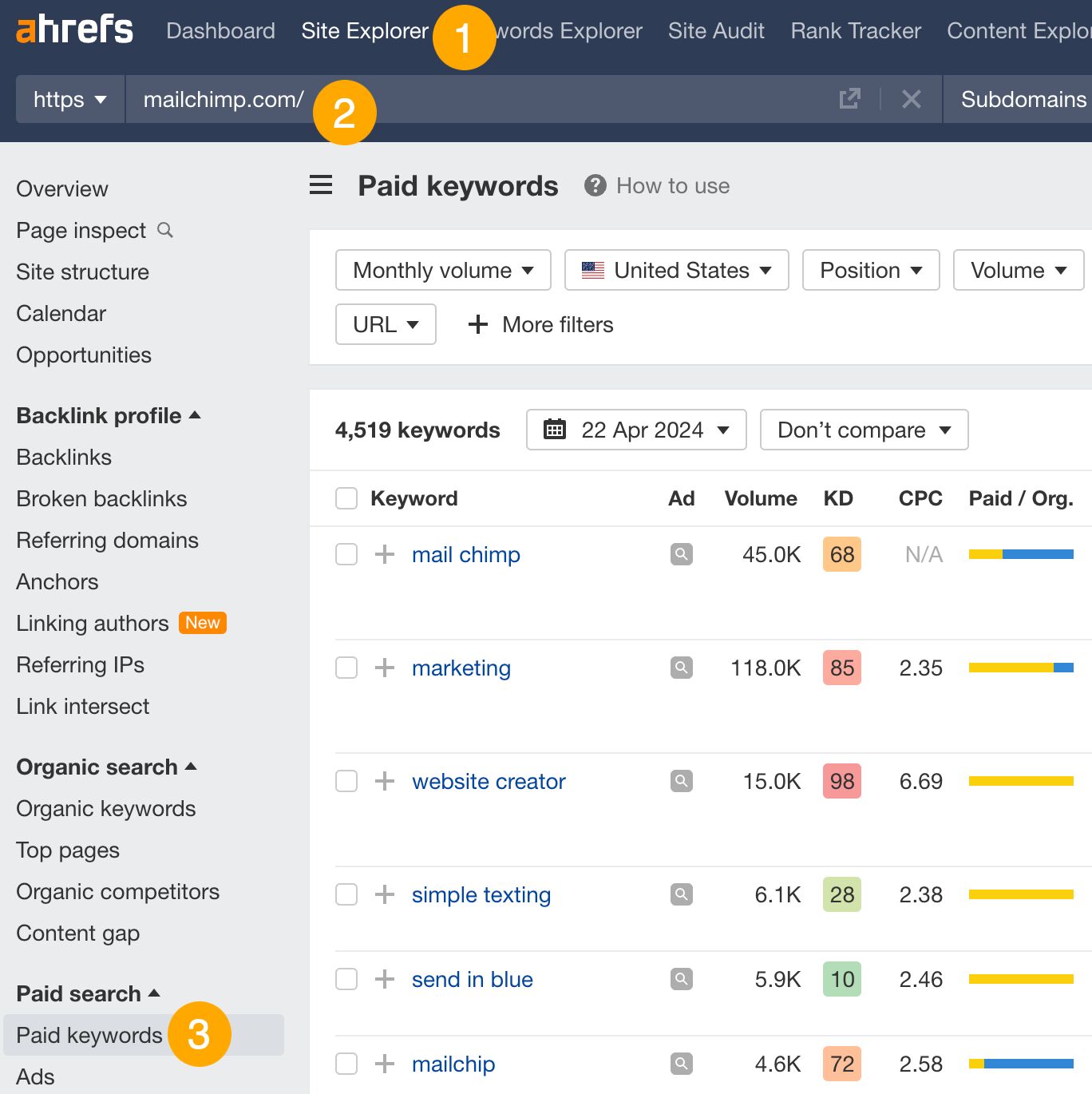

This report shows you the keywords your competitors are targeting via Google Ads.
Since your competitor is paying for traffic from these keywords, it may indicate that they’re profitable for them—and could be for you, too.
You know what keywords your competitors are ranking for or bidding on. But what do you do with them? There are basically three options.
1. Create pages to target these keywords
You can only rank for keywords if you have content about them. So, the most straightforward thing you can do for competitors’ keywords you want to rank for is to create pages to target them.
However, before you do this, it’s worth clustering your competitor’s keywords by Parent Topic. This will group keywords that mean the same or similar things so you can target them all with one page.
Here’s how to do that:
- Export your competitor’s keywords, either from the Organic Keywords or Content Gap report
- Paste them into Keywords Explorer
- Click the “Clusters by Parent Topic” tab
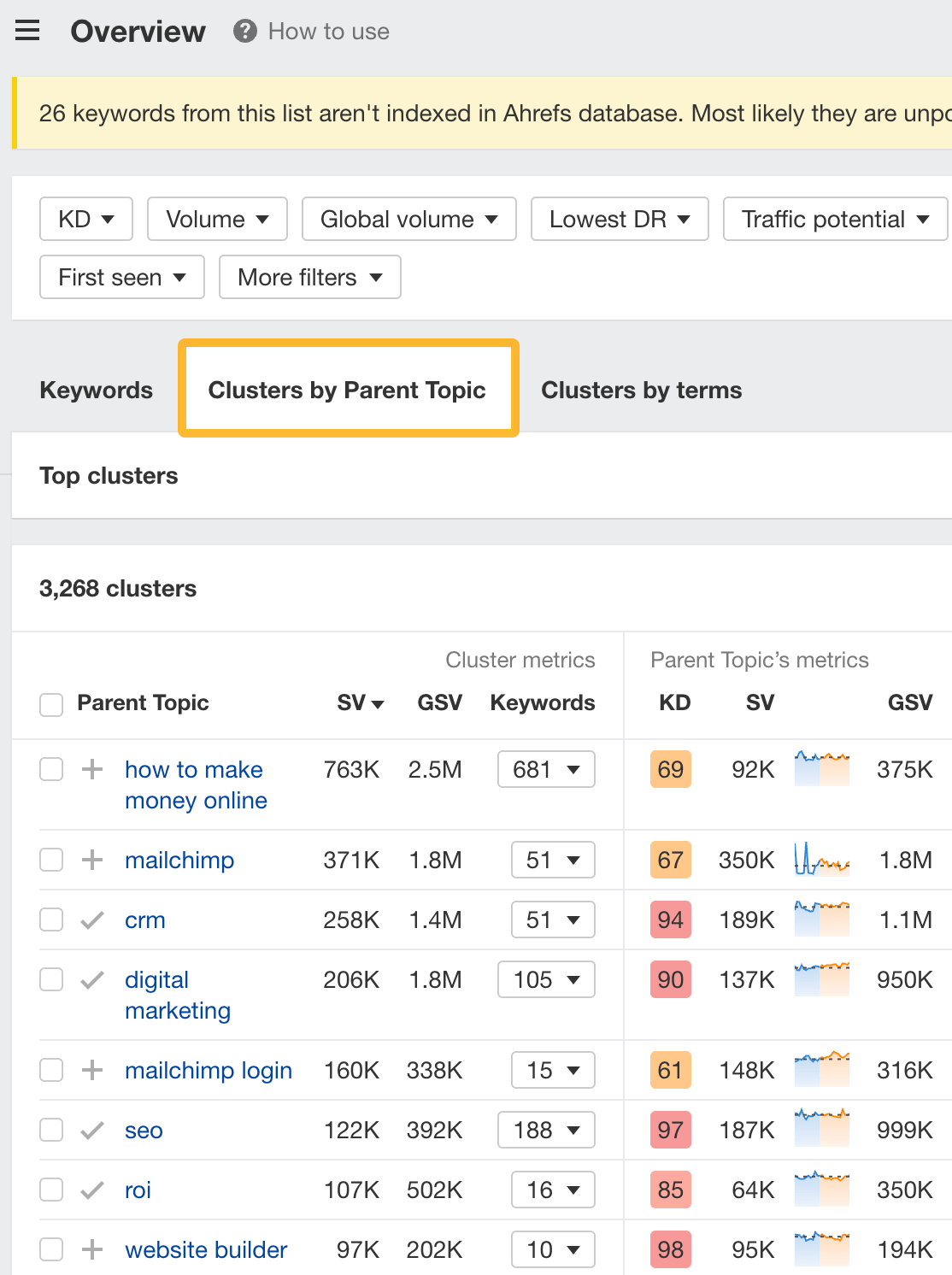

For example, MailChimp ranks for keywords like “what is digital marketing” and “digital marketing definition.” These and many others get clustered under the Parent Topic of “digital marketing” because people searching for them are all looking for the same thing: a definition of digital marketing. You only need to create one page to potentially rank for all these keywords.
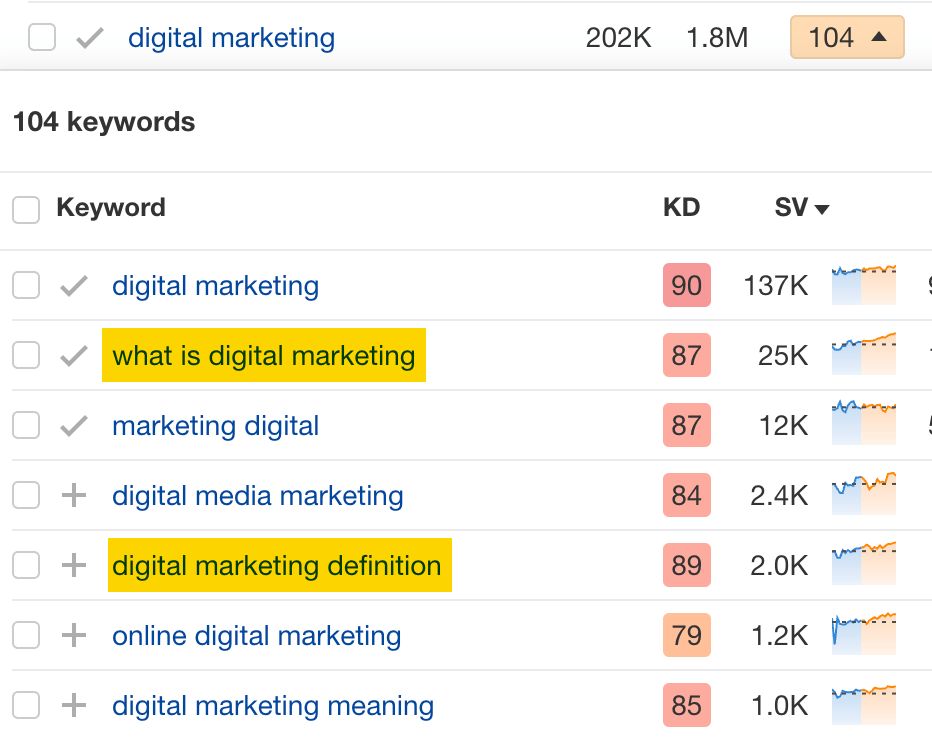

2. Optimize existing content by filling subtopics
You don’t always need to create new content to rank for competitors’ keywords. Sometimes, you can optimize the content you already have to rank for them.
How do you know which keywords you can do this for? Try this:
- Export your competitor’s keywords
- Paste them into Keywords Explorer
- Click the “Clusters by Parent Topic” tab
- Look for Parent Topics you already have content about
For example, if we analyze our competitor, we can see that seven keywords they rank for fall under the Parent Topic of “press release template.”


If we search our site, we see that we already have a page about this topic.


If we click the caret and check the keywords in the cluster, we see keywords like “press release example” and “press release format.”
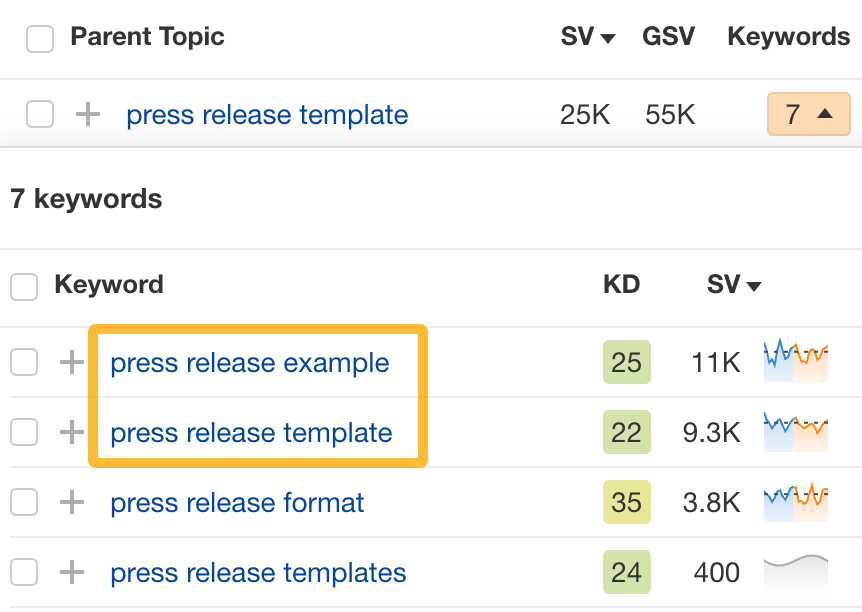

To rank for the keywords in the cluster, we can probably optimize the page we already have by adding sections about the subtopics of “press release examples” and “press release format.”
3. Target these keywords with Google Ads
Paid keywords are the simplest—look through the report and see if there are any relevant keywords you might want to target, too.
For example, Mailchimp is bidding for the keyword “how to create a newsletter.”


If you’re ConvertKit, you may also want to target this keyword since it’s relevant.
If you decide to target the same keyword via Google Ads, you can hover over the magnifying glass to see the ads your competitor is using.
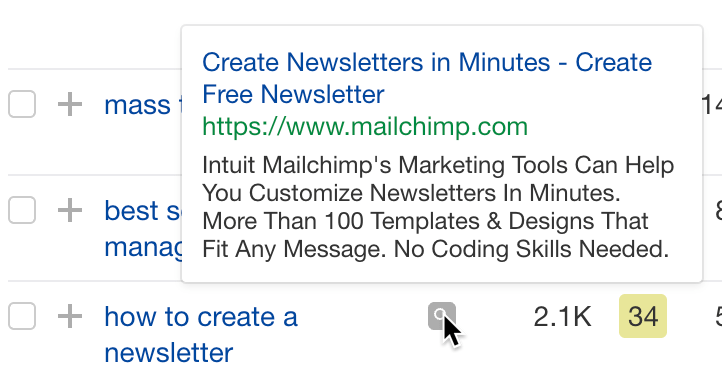

You can also see the landing page your competitor directs ad traffic to under the URL column.


Learn more
Check out more tutorials on how to do competitor keyword analysis:
-

 PPC6 days ago
PPC6 days ago19 Best SEO Tools in 2024 (For Every Use Case)
-
SEARCHENGINES6 days ago
Daily Search Forum Recap: April 18, 2024
-
SEARCHENGINES5 days ago
Daily Search Forum Recap: April 19, 2024
-

 MARKETING6 days ago
MARKETING6 days agoEcommerce evolution: Blurring the lines between B2B and B2C
-
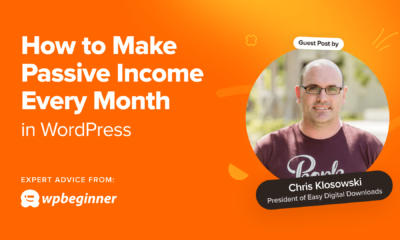
 WORDPRESS5 days ago
WORDPRESS5 days agoHow to Make $5000 of Passive Income Every Month in WordPress
-

 SEO6 days ago
SEO6 days ago2024 WordPress Vulnerability Report Shows Errors Sites Keep Making
-

 WORDPRESS6 days ago
WORDPRESS6 days ago10 Amazing WordPress Design Resouces – WordPress.com News
-
WORDPRESS7 days ago
[GET] The7 Website And Ecommerce Builder For WordPress












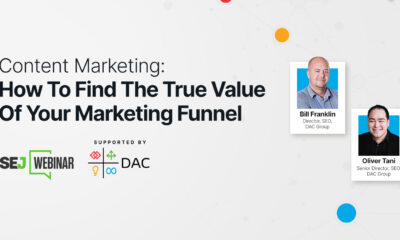



You must be logged in to post a comment Login